Movement training - in the past called litheness training - has developed during
the years. From the old system where the athletes "chopped" themselves to greater
litheness to the more modern tighten - relax - stretch; also called stretching.
Everybody knows that after a match or a training lesson it is important to stretch
out. By doing this the connective tissue in the muscles, which during the activities
have been shorter, be stretched out again. By this you among other things avoid
the risk of cramps and eventual pain in the muscles will be reduced. This form of
stretching very much resemble the following exercises, but is indicated by only
having the stretching phase, where the original length of the muscles is restored.
Besides that the activity restores the bio-chemical balance in the tissue (calcium,
potassium, sodium and acid-ions from the lactic acid).
The more goal-oriented
movement training has many positive elements included. Muscles, which are tightened
too early, causes more tense movements and reduced technical performance. In addition
the movement training takes effect on many chronic-like troubles like myalgia, infiltration
and inflammation in fat pads and tendon-connections as well as the acute injuries
like muscle fibre injuries and strains. Further the movement training supply the
muscles with more elastic energy. For example a runner can spare up to 50 percent
of his energy, because the muscles sort of springs on every step and by that are
contributing to less use of the direct use of energy. This springy effect is especially
seen in the kangaroo's jumping technique, where each landing accumulates energy
to the next jump, whereby the kangaroo only has to use a fraction of its jumping
power at the next jump.
Before you start the movement training you must be
aware of a couple of important things:
- Exaggerated movement training damages
the joints
- One must not be pressed to greater movement without also increase
the strength around the joint correspondingly.
- Too hard pressure makes damage
instead of building up
Therefore all exercises must include the elements
tighten (the muscle works and becomes stronger) - relax (the muscle relaxes) - stretch
(the muscle is pulled longer and becomes more elastic).
Most par6ts of the
body can be trained to greater mobility. The only places where it is not possible
to go further without destroying the bone structure are the places, where the movement
stops because the bones collides for example by stretching the knee or elbow joint.
The most common areas for movement training are:
- the hip-joint (influence
on the following muscles: outward-leaders - inward-leaders - hip-stretchers - hip-benders
- inward-rotators - outward-rotators)
- the knee-joint (influence on the following
muscles: hollow of the knee muscles - knee-stretchers)
- the muscles in the hollow
of the knee (influence on the following muscles: hollow of the knee muscles)
- ankle-joint (influence on the following muscles: calf-muscle - ankle-benders)
- shoulder-joint (influence on many large and small muscles: among others back-muscle
- chest-muscle - delta-muscle and arm-bender-muscle)
- the spinal column (influence
on the following muscles: straight belly-muscles - diagonal belly-muscles - deep
back-muscles). All training of the spinal column must be followed up by intense
technique training on order to secure correct use of the back.
There are
some built-in reflexes, which protect muscles and tendons against damage.
These
are called the myotatic reflex and the anti-myotatic reflex.
The myostatic
reflex
This protects the muscles from being ripped up. When the muscle is extended,
a signal is sent to the spinal cord, which activates a row of muscle cells - the
muscle is tightened. Therefore the movement training with fast movement will have
no special effect, because the muscle tries to pull together.
The anti-myotatic
reflex
This protects the tendon to the muscle and react on pulling and drawings
on the tendon. Again a signal is sent to the spinal cord, which through an intermediary
neurone sends a message to the muscle to relax. This can be used in the stretching,
where the muscle at first is tightened in order to obtain the anti-myostatic reflex.
The free will can hold the idea, that the muscle still is to be tightened and hereby
"drown" the reflex. When the stretch is made, the anti-myoatic reflex will still
send relaxing impulses and the ability of relaxing in the muscles will be kept.
All the below-mentioned exercises are build on these principles.
- tighten the/those muscles, which must be stretched for 10-15 seconds without
moving the joint (isometric strength training)
- relax for 2-5 seconds
- move
slowly the joint to its outer position and keep it there for 25-60 seconds. The
pressure must not be painful, as the pain is the body's signal that something is
about to be injured. The pain can be indications of small muscle fibre rippings,
which certainly do not make the muscle more supple - far from it!
Exercises
with partner demands that this person knows the exercise and knows the limit for
the pull and the risk of injuries.
When the training is performed, the following must be complied with:
- make
sure that you are warmed up
- avoid fast movements but use the anti-myostatic
reflex
- avoid great strains but press controlled in the position where you can
feel the stretch
- train one joint at the time
- train frequently ( 2 times
a day would be fine)
- repeat the exercises 4-6 times
- use clothes which
does not narrow your movements
Exercises:
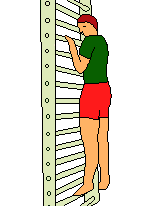
|
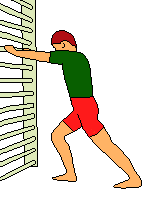
|
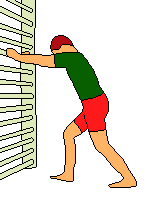
|
| The two-headed calf-muscle Stand on your toes |
Place the foot to the read, keep the knee straight and press the heel
to the floor and the hips forward. |
Then bend in the knee and press it forward over the toes. |
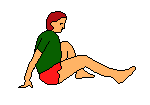
|
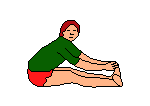
|
|
| The hollow of the knee muscles Sit down with one foot forward and press the heel to the floor |
Stretch the knee and lean your body forward with straight back and -
if necessity bend the foot backwards. |
|
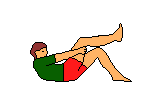
|
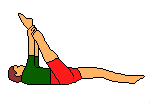
|
|
| The hollow of the knee muscles Lie down on your back and grasp behind one of your knees. Try to press the leg away from your hands |
Stretch the knee and pull the leg over your head. |
|
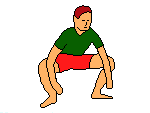
|
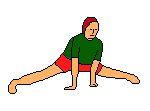
|
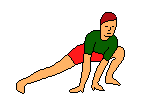
|
| Inward-leaders of the thigh Stand with spread, bended legs with the palm of your hands against each other and the elbows against the knees. Try to press the knees together. |
Spread - and stretch the legs and place your hands on the floor. |
The stretch can also be made over one leg. . |
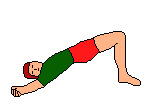
|
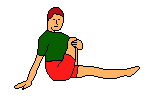
|
|
| Hip-stretchers (The buttocks) Lie on your back and lift the hips from the floor. |
Sit down with one leg bended, resting on the floor and with the other legs foot in the floor on the outside of the "resting" leg. Press the knee in front of your body. | |
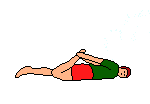
|
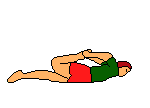
|
|
| The fourheaded knee-stretcher Lie on the belly and hold tight on your foot while trying to stretch the knee. |
Press the heel against your buttocks and raise the knee from the floor. |
|
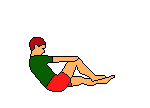
|
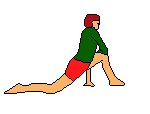
|
|
| The deep hip-bender Sit down with the hands on a knee and try to bend the knee up against your chest. |
Turn around into a position with the weight distributed between a foot and a bended knee. Press the hip forward. | |
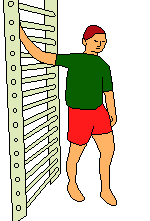
|
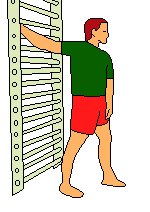
|
|
| The chest-muscle Standing with one hand on the ribs (or a door frame) and press the arm forward. |
Then press the chest forward. |
|
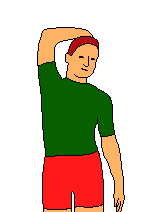
|
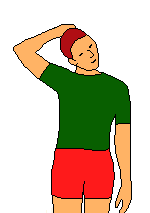
|
|
| The neck-muscles Grab with one hand over the head and try pressing the head away. |
Pull the head slowly down to the side. Hold the opposite shoulder down. | |
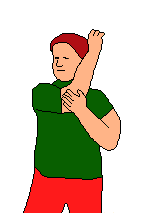
|
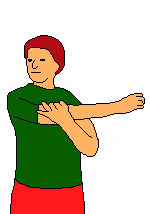
|
|
| The broad back-muscle Place left arm over your belly and place right elbow in your left hand. Press your right arm backwards. |
Lead right arm in front of your body, grab with left hand and pull the arm further in front of you. | |
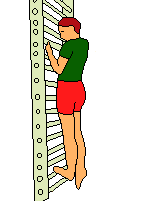
|
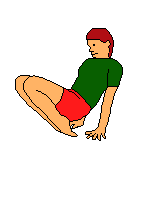
|
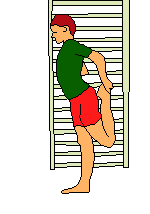
|
| Calf |
Lower keg, frontside - front shinbone muscle | Knee-stretcher and hip-bender |
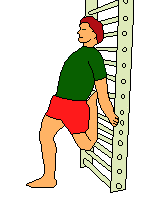
|
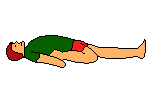
|
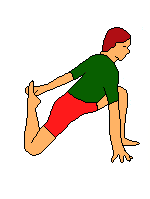
|
| Knee-stretcher, hip-bender | Knee-stretcher, hip-bender | Knee-stretcher, hip-bender |
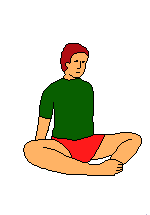
|
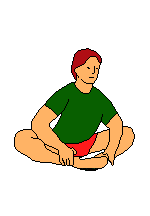
|
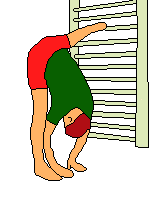
|
| Inward-leaders | Inward-leaders | Inward-leaders and right hollow of the knee muscle |
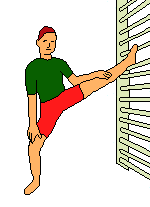
|
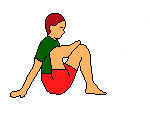
|
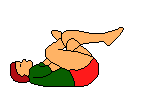
|
| Inward-leaders (left) and hollow of the knee muscle (right) | Seat-muscles | Seat-muscles |
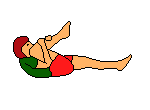
|
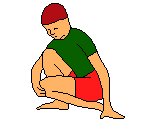
|
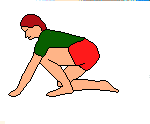
|
| Seat-muscles | Front shinbone-muscle | Deep hollow of the knee-muscle (left leg) |
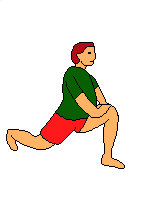
|
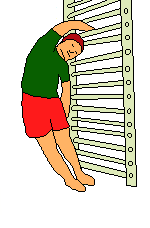
|
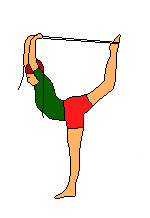
|
| Hip-bender |
Side-bender, spinal column, broad backmuscle (right)) | Frontside, hip-bender |
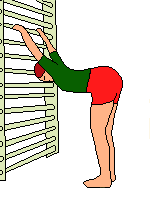
|
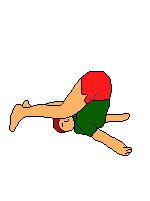
|
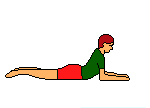
|
| Chest and chest spinal column | Back-stretcher, neck-muscles | Stomach |
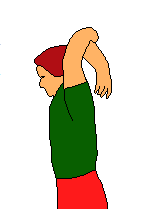
|
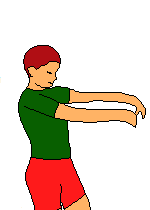
|
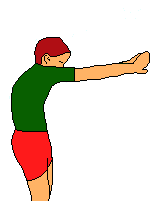
|
| Arm-stretcher | Wrist-bender | Wrist-bender, backside shoulder |
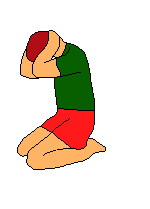
|
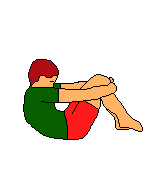
|
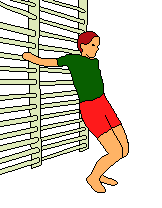
|
| Neck | Back - upper part | Chest, shoulder frontside |
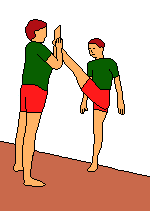
|
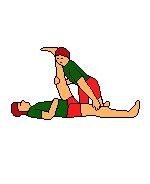
|
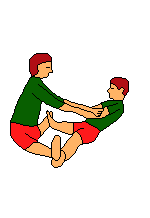
|
| Hollow of the knee, seat-muscles | Hollow of the knee, seat-muscles | Inward-leaders |
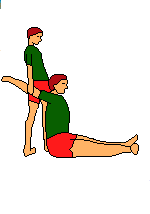
|
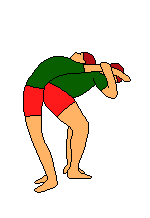
|
|
| Chest | Frontside, upper spinal column |